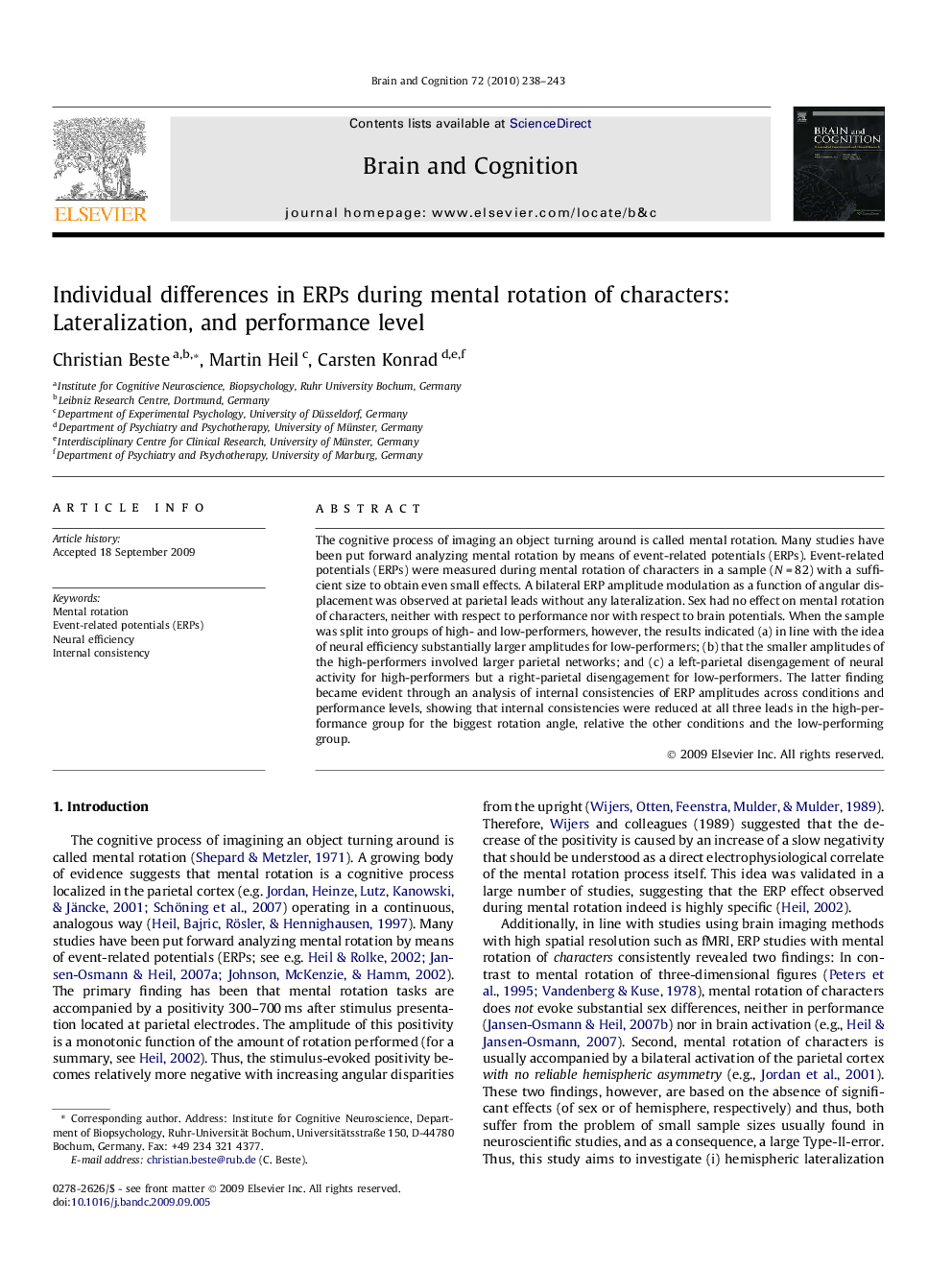| Article ID | Journal | Published Year | Pages | File Type |
|---|---|---|---|---|
| 924782 | Brain and Cognition | 2010 | 6 Pages |
The cognitive process of imaging an object turning around is called mental rotation. Many studies have been put forward analyzing mental rotation by means of event-related potentials (ERPs). Event-related potentials (ERPs) were measured during mental rotation of characters in a sample (N = 82) with a sufficient size to obtain even small effects. A bilateral ERP amplitude modulation as a function of angular displacement was observed at parietal leads without any lateralization. Sex had no effect on mental rotation of characters, neither with respect to performance nor with respect to brain potentials. When the sample was split into groups of high- and low-performers, however, the results indicated (a) in line with the idea of neural efficiency substantially larger amplitudes for low-performers; (b) that the smaller amplitudes of the high-performers involved larger parietal networks; and (c) a left-parietal disengagement of neural activity for high-performers but a right-parietal disengagement for low-performers. The latter finding became evident through an analysis of internal consistencies of ERP amplitudes across conditions and performance levels, showing that internal consistencies were reduced at all three leads in the high-performance group for the biggest rotation angle, relative the other conditions and the low-performing group.
